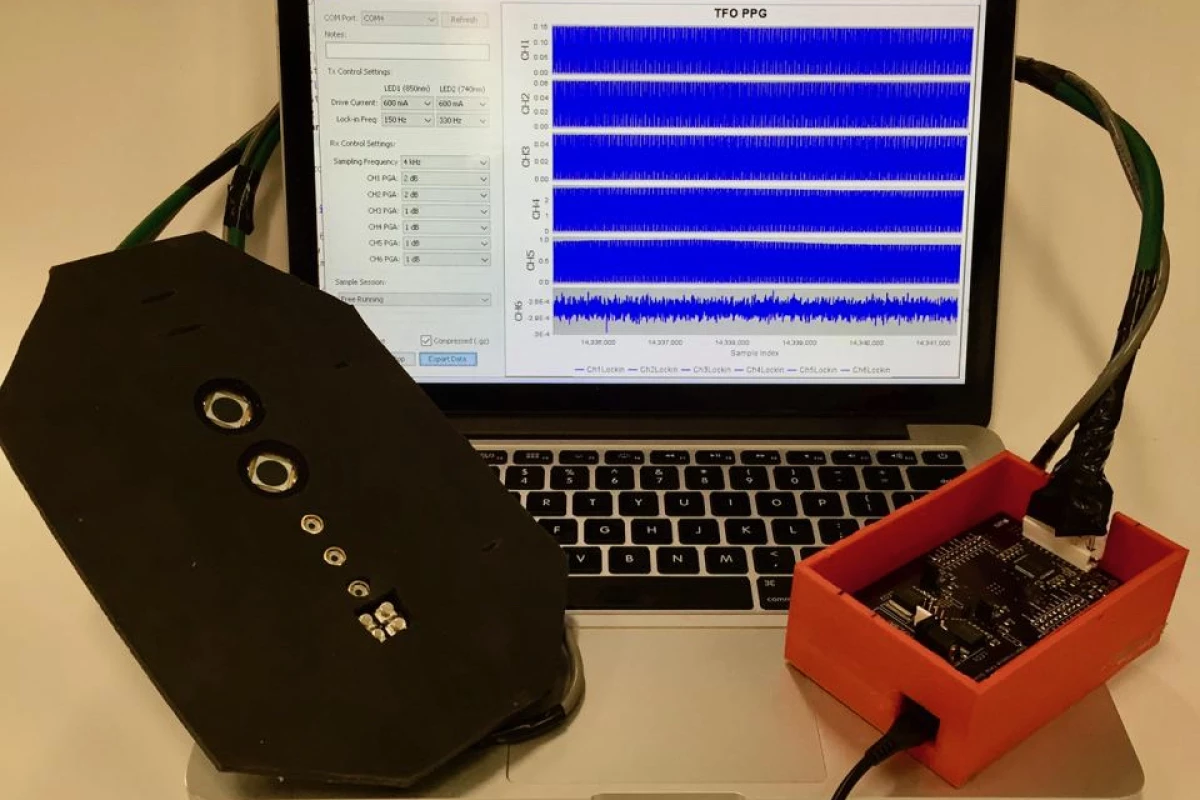Many readers are likely already familiar with the oximeters that measure blood oxygen levels via the patient's finger. Well, scientists have now developed a device that works on the same principle, but it can be non-invasively used on unborn fetuses.
Conventional oximeters use LEDs to shine red and near-infrared light through the skin on one side of a translucent part of the body, such as a fingertip or an ear lobe. Lighter-colored oxygen-rich blood absorbs much of the infrared light, while darker oxygen-poor blood absorbs much of the red light. Therefore, by analyzing the ratio of the two types of light that make it through to the other side of the body part, the oximeter is able to determine the blood oxygen levels.
Needless to say, a regular oximeter can't be applied to a fetus that's still in its mother's womb. It is important to monitor fetal blood oxygen levels immediately prior to birth, though, as oxygen deprivation can cause permanent brain damage or even death of the fetus.
Ordinarily, doctors estimate those levels based on the fetal heart rate, and the rate of the mother's contractions. If it's determined that oxygen depravation may be occurring, then the physician will likely advise that the baby be delivered as soon as possible, via cesarean section. If it turns out that the fetus wasn't actually being deprived of oxygen, though, then the C-section will have been unnecessary.
That's where the new fetal oxygen monitor comes in.
Developed by scientists at the University of California-Davis, it's applied to the mother's abdominal skin, harmlessly shining light down through her biological tissue and into the fetus. By analyzing the manner in which that light is scattered back, the device is able to accurately determine the fetus' blood oxygen levels. It has already been successfully tested on pregnant sheep.
Given that the light is passing through both the mother and the fetus, though, how is the system able to tell whose oxygen levels are whose?
"We have independent measurements of the mother's heart rate and her oxygen saturation (as well as other possible cues such as fetal heart rate, maternal respiration rate/motions via conventional monitors), which can be leveraged to filter out noise and focus on where to look for fetal information in the sensed signal," lead scientist Prof. Soheil Ghiasi tells us. "This is akin to the 'cocktail party effect,' which refers to the brain's ability to focus on/understand a specific speaker in the presence of substantial background noise."
The system is currently being commercialized via spinoff company Storx Technologies. It is described in a paper that was recently published in the journal IEEE Transactions in Biomedical Engineering.
Source: University of California-Davis




